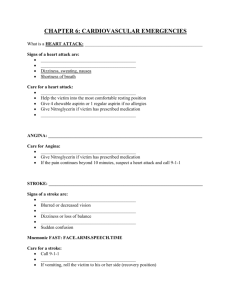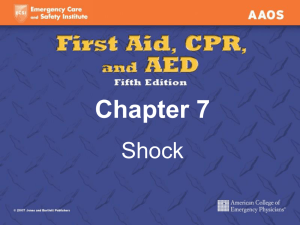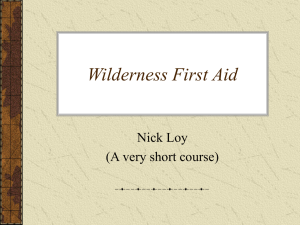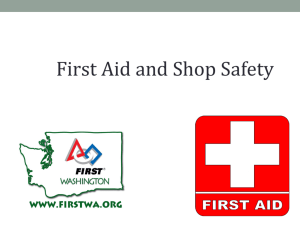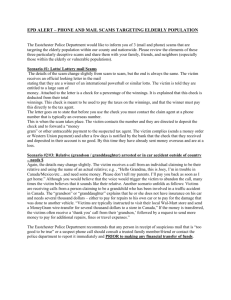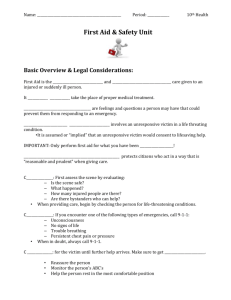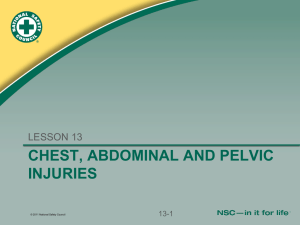Safety and First Aid
advertisement
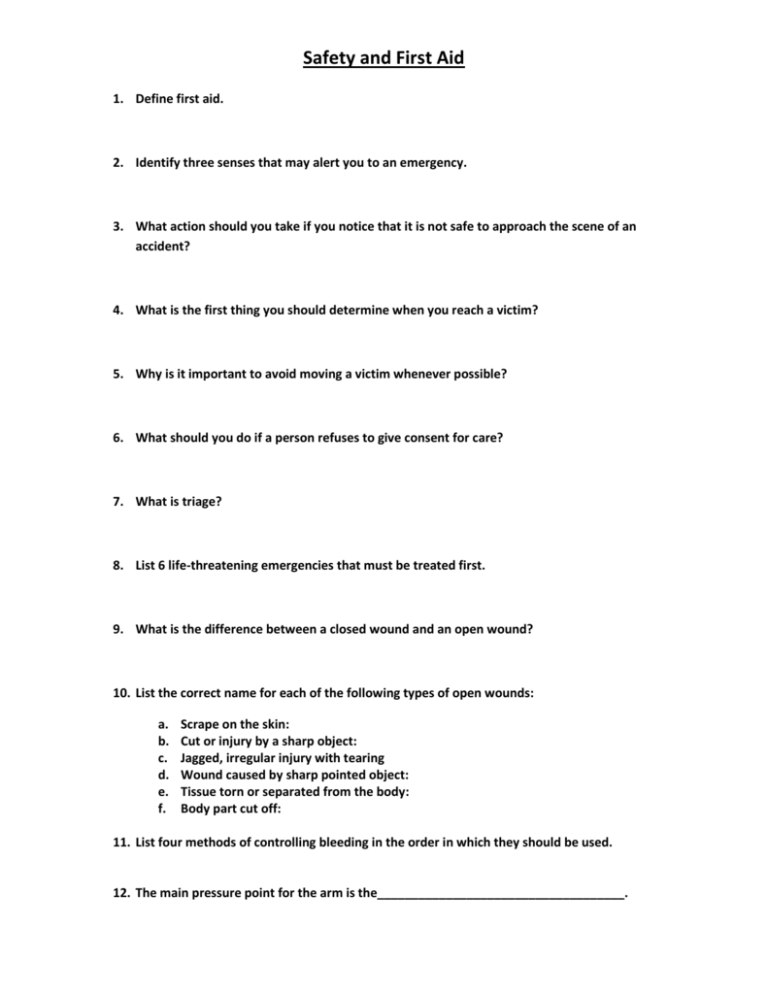
Safety and First Aid 1. Define first aid. 2. Identify three senses that may alert you to an emergency. 3. What action should you take if you notice that it is not safe to approach the scene of an accident? 4. What is the first thing you should determine when you reach a victim? 5. Why is it important to avoid moving a victim whenever possible? 6. What should you do if a person refuses to give consent for care? 7. What is triage? 8. List 6 life-threatening emergencies that must be treated first. 9. What is the difference between a closed wound and an open wound? 10. List the correct name for each of the following types of open wounds: a. b. c. d. e. f. Scrape on the skin: Cut or injury by a sharp object: Jagged, irregular injury with tearing Wound caused by sharp pointed object: Tissue torn or separated from the body: Body part cut off: 11. List four methods of controlling bleeding in the order in which they should be used. 12. The main pressure point for the arm is the____________________________________. 13. The main pressure point for the leg is the _________________________________________. 14. List 4 ways to prevent infection while caring for minor wounds. 15. List 5 signs of infection. 16. How should objects embedded deep in the tissues be removed? 17. List 6 signs and symptoms of a closed wound. 18. List 4 first aid treatments for a victim of a closed wound. 19. What other condition must you be prepared to treat while caring for wounds? 20. List 4 causes of shock. 21. List 6 symptoms of shock. 22. List 4 ways that poisoning can be caused. 23. How should you position an unconscious victim who is breathing? Why? 24. What is the first thing to do if a victim swallows a poison? 25. List 2 ways to induce vomiting. 26. Why is activated charcoal used after a poisoning victim vomits? 27. List 4 types of poison victims in whom vomiting should not be induced. 28. How do you treat victims poisoned by chemicals splashing on the skin? 29. What is the main treatment for superficial burns? 30. Why is a sterile dressing applied to a burn? 31. If blisters appear on a burn, how should you treat these? 32. Why is shock frequently noted in victims with severe burns? 33. List 5 symptoms of heat exhaustion. 34. List 3 first aid treatments for heat exhaustion. 35. List 3 symptoms of heat stroke. 36. List 3 first aid treatments for heat stroke. 37. List 3 first aid treatments for hypothermia. 38. List four symptoms of frostbite. 39. Name 4 common sites for frostbite. 40. What temperature water should be used to warm a body part injured by frostbite? 41. Why is it important not to rub or massage a body part affected by frostbite? 42. What is the difference between a closed and a compound fracture? 43. List 5 symptoms of a fracture. 44. List 4 symptoms of a dislocation. 45. List four symptoms of a sprain. 46. Why are cold applications used to treat a strain or sprain? 47. If an object is embedded in the eye, what first aid care should be given? 48. List four symptoms of heart attack. 49. List 3 first aid treatments for a heart attack victim. 50. List 6 symptoms of a stroke. 51. List 3 first aid treatments for a stroke. 52. If early symptoms of fainting are noted, how should you position the victim? 53. List 3 points of care for a victim who has fainted. 54. What is a convulsion? 55. What is a diabetic coma and how is it treated? 56. What is insulin shock and how is it treated? 57. What is a dressing? 58. What is a bandage? 59. List 3 types of bandages. 60. Why are elastic bandages hazardous?


